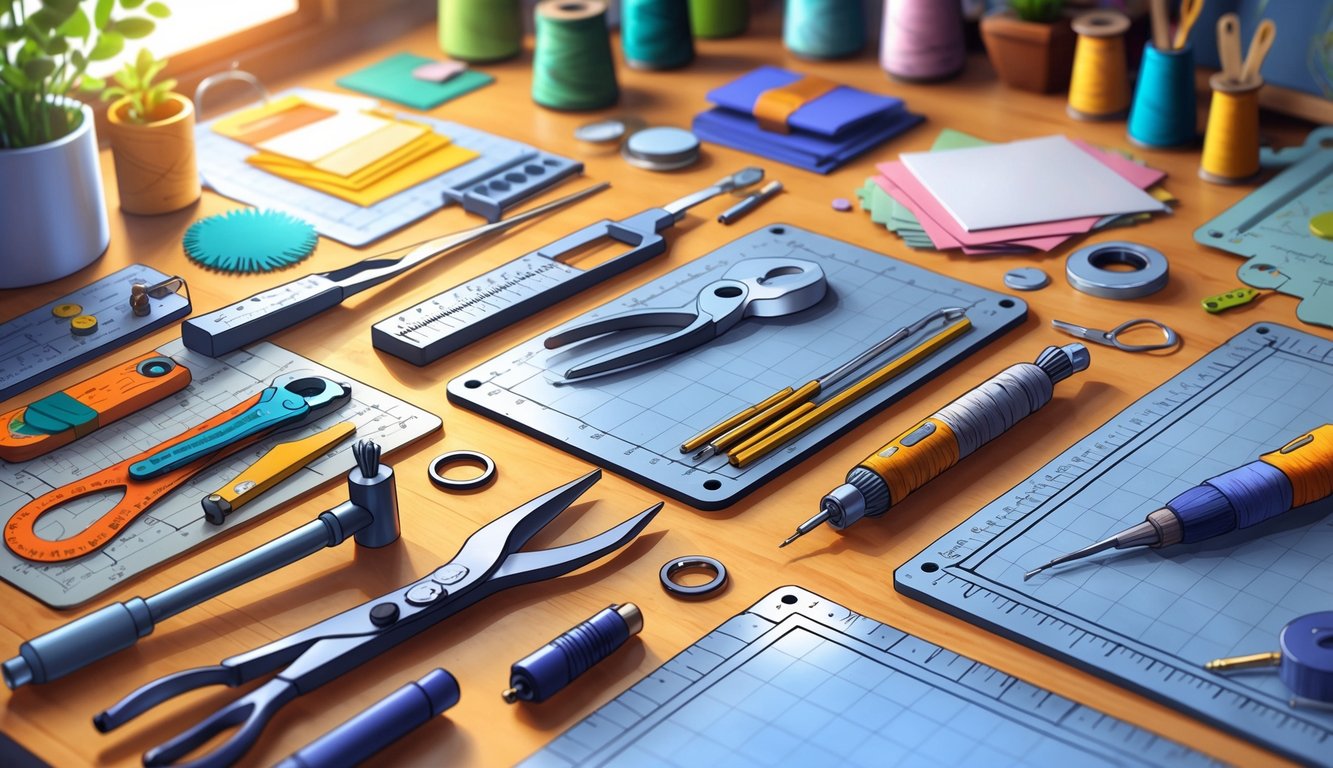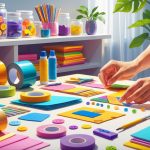
Here’s the thing that makes me question my entire relationship with crafting: why does everyone ignore the dirt-cheap basics? Seriously, when’s the last time you saw someone actually use a bone folder? Most people just grab a spoon and call it a day. I watched this pro at a trade show—she had a wall of color-coded thread, the works—go on about her $7 corner punch like it was the Holy Grail. Not the $400 die-cutter. The $7 punch. Wild. Honestly, the stuff I reach for most is the stuff nobody brags about on Instagram. The “boring” tools, the ones pros finally admit they’d freak out without.
And don’t even get me started on the glue gun hype. Every headline screams about the “must-have” version, but I’m over here poking holes with my old awl for the hundredth time, wondering why nobody told me zip ties are the secret to saving a saggy mobile. (Yes, zip ties. Who knew?) Apparently, the underrated tools professionals swear by are finally getting some attention, but, honestly, where was this advice when I needed it?
That Teflon bone creaser I almost tossed? Outlasted my entire glue stick collection. Not even joking. I thought I was the weirdo, but apparently, “buy quality, not hype” is the only real advice that holds up. A teacher told me that, which is weird, because she also said, “Just use what feels right in your hand.” Which… is it both? I don’t know.
Why Choosing the Right Crafting Tools Matters
Every time I start a new project, I regret cheaping out on tools. The last batch of wooden coasters? Crooked. I mean, it’s not rocket science, but you can’t get clean lines with garbage supplies. If the tools suck, the project sucks, and no way am I posting that online. Embarrassing.
Elevating DIY Projects
It’s not about hoarding scissors and glue guns like some kind of office supply goblin. The right tool means I can cut felt without it looking like a dog chewed it. Tried “safety scissors” once—never again. The penguin looked like it’d given up on life. Upgrading from a bargain rotary cutter to a real one? Game changer. Suddenly, straight lines are actually straight.
The whole vibe shifts. Instead of rage-quitting, I get that click of a perfect hole punch and feel like a genius. Crafters obsess over detail, and, random fact, the Crafts Council claims using better tools makes you 15% faster. I don’t know if I believe the number, but I did finish a quilt in record time when my seam ripper wasn’t some dollar-store relic.
Brands like Fiskars, Olfa, or just a decent hobby knife—if you pick for the project, not the price, you’ll notice. I wasted money on cute markers that dried out in a week. Lesson learned: function beats looks.
The Impact of Tool Quality on Crafting Results
I used to roll my eyes at people who raved about specialty brands, but after switching to Titebond glue, my wood stuff stopped falling apart. Who knew? Using bad tools makes me want to quit halfway through. I’m not alone—experts at DiversiTech Global basically say, “use the wrong tool, get garbage results.”
A cheap brush ruined a canvas, but the right one? Clean lines. It’s a domino thing: good tools make me look more skilled than I am. Suddenly, I’m gifting stuff instead of hiding it in a closet.
If your glue gun overheats or your shears snag, it’s not your fault. Even ultimate crafting guides say tool quality is the only thing you can control. Not the cat. Not your energy. So, yeah, I’m done with shortcuts. Nothing kills momentum like a busted blade in the middle of an origami binge.
Emerging Crafting Tools: What Pros Are Using Now
Is there a single workspace left that isn’t overflowing with some “innovative” gadget that’s supposed to change your life? I’ve watched enough pros swap out their old glue guns for gadgets that beep, whir, and jam at the worst possible time. Sometimes the new stuff helps, sometimes it’s a waste. But, yeah, the right emerging tool can turn tedious hours into something a little less soul-crushing.
The Rise of Cricut and Cutting Technology
Okay, so, I used to eyeball every cut—disaster. Then I got a Cricut. Not magic, but, wow, suddenly my lines are straight and I’m not cursing at vinyl. Cricut Maker, Explore Air, those weirdly sharp rotary blades—they let me do stuff I’d never bother with by hand. On forums, pros are always linking to the best crafting tools and fighting about the best mat settings. Spoiler: it’s always the blades that cause drama.
Still, I keep my X-Acto nearby. Touchscreens freeze, but hands don’t. And nobody talks about what to do when a cutting mat loses all stick. Is that my fault? Or just bad design?
Popular Innovations Among Professionals
Everyone’s got opinions about new tools, but only a few actually matter. Curved-tip tweezers? Way better than regular ones—no more fumbling with tiny paper bits. Interchangeable craft knife blades? Lifesaver. DIYS.com has a list of best crafting tools pros swear by, but honestly, that Fancii Precision Craft Knife is the one I keep seeing everywhere now.
It’s kind of unsettling when your favorite supply gets replaced by something better. People rave about LED magnifying lamps or glue guns that let you control the temp. I question every tool before a big project, but I still fall for “innovations” that end up collecting dust. If someone had warned me how fast new tools take over, maybe I’d have saved some shelf space.



